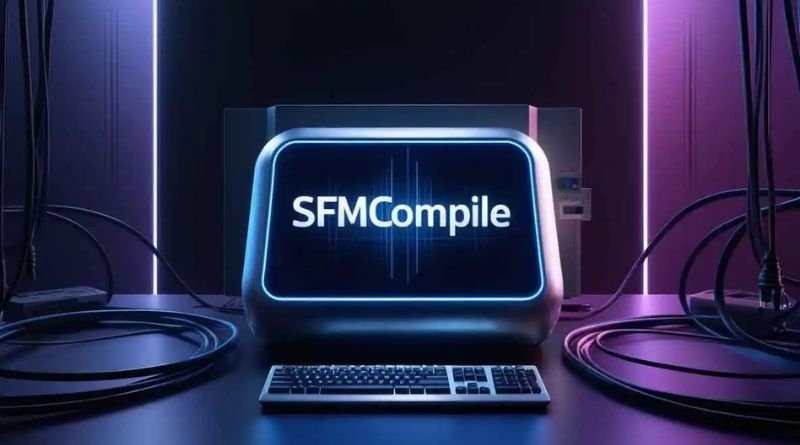In the world of 3D animation and digital art, Source Filmmaker (SFM) has become one of the most popular tools for creating and rendering animations. Developed by Valve, SFM is widely used by animators and content creators to produce high-quality films and animated sequences. One of the critical processes when working with SFM is compiling, which refers to the process of preparing models, materials, animations, and other assets into a format that can be used within the program.
In this article, we will explain what SFM compile is, why it’s essential, how to compile correctly, and address some common frequently asked questions (FAQs).
Table of Contents
What is SFM Compile?
The term “SFM compile” refers to the process of converting and optimizing 3D models, animations, and other assets into a format that can be properly read and used by Source Filmmaker. This process typically involves compiling model files (such as those in .mdl format) and animation files, as well as ensuring that textures, rigging, and other resources are set up correctly for use in SFM.
When you create a 3D model or animation for SFM, it is often created in an external program like Blender or 3ds Max. These programs use file formats that SFM doesn’t directly understand. The compile process converts these assets into the proper format that can be imported and manipulated inside SFM.
Why is Compiling Important?
Compiling is essential for several reasons:
- Optimization: Compiling ensures that the assets you import into SFM are optimized for use in the program. SFM works best with compiled files because they are streamlined and ready to be used without requiring excessive system resources.
- Compatibility: Compiling ensures that the 3D models, textures, and animations are correctly formatted and compatible with the Source Engine, which powers SFM. Without compiling, these assets may not work or may display incorrectly in your project.
- Efficient Workflow: Compiling can speed up the workflow because it converts assets into the right format, allowing you to focus on the creative aspects of your project without worrying about compatibility or performance issues.
How to Compile Assets for SFM
Compiling assets for Source Filmmaker involves several steps, typically using a tool called Crowbar. Crowbar is the most commonly used decompiler and compiler tool for Source Engine-based programs like SFM. Here’s a basic guide on how to compile assets for SFM:
Step 1: Download and Install Crowbar
Crowbar is a free, open-source tool available for download from various community sites. Once you have Crowbar installed, you can start using it to compile your models and animations for SFM.
Step 2: Prepare Your Model Files
Before compiling, make sure that the model or animation you want to use in SFM is properly exported from your 3D software. This typically means exporting the model as a .fbx or .obj file and ensuring that all textures and animations are correctly applied.
Step 3: Launch Crowbar and Set Up the Compilation Options
Open Crowbar and configure the settings. You’ll need to select the input file (your model or animation file) and set the output folder where the compiled files will be saved. Make sure that you choose the correct settings for compiling models and animations, including the proper path to your SFM game directory.
Step 4: Compile the Asset
Once everything is set up, click the “Compile” button in Crowbar. This will start the compilation process, and after a few moments, your file should be ready to use in SFM. The compiled model will usually be saved as a .mdl file, and any associated files like textures will also be prepared for use.
Step 5: Test the Compiled Asset in SFM
After compiling the asset, launch Source Filmmaker and test your compiled model or animation. Import the compiled file into your SFM project, and check for any issues such as incorrect textures, missing rigging, or animation problems. If there are any issues, you may need to recompile with different settings or correct the original asset in your 3D software.
Common Issues with SFM Compilation
While compiling is a relatively straightforward process, there are a few common issues users might encounter:
- Model Not Appearing in SFM: This can happen if the compilation process didn’t complete successfully. Ensure that all paths are correct, and try recompiling the asset. Double-check the model file and ensure it was exported correctly from your 3D software.
- Missing Textures: If textures don’t appear on your model in SFM, make sure that they are properly linked to the model file and that the texture paths are correct. You might need to adjust the path or reassign the textures during the compile process.
- Animations Not Working: Animations can sometimes fail to load if they weren’t correctly exported or if the rigging was incorrect. Ensure that the animation files are set up properly in the 3D software and recompile the animation with the correct settings.
- Incompatible File Formats: SFM requires specific file formats for models, textures, and animations. If you try to import a file format that isn’t supported, you might need to convert the asset into a compatible format before compiling.
FAQ
1. What is Crowbar, and how does it relate to SFM compiling?
- Crowbar is a tool used to decompile and compile assets for the Source Engine, which includes SFM. It allows users to convert 3D models and animations into a format that is compatible with Source Filmmaker.
2. Do I need to use Blender or 3ds Max to create assets for SFM?
- While you don’t have to use these programs, they are the most common software used to create assets for SFM. However, other 3D modeling software can also be used, as long as you export to a compatible format like
.fbxor.obj.
3. Can I use pre-made models and animations for SFM?
- Yes, many pre-made models and animations are available for SFM. These can be downloaded from community sites, and you may still need to compile them if they are not in the correct format.
4. How long does it take to compile an asset for SFM?
- The time it takes to compile an asset depends on the size and complexity of the file. Simple models may only take a few seconds, while more detailed assets with complex textures or animations might take longer.
5. What file formats does SFM support?
- SFM primarily supports
.mdlfiles for models,.qcfiles for source code,.anifiles for animations, and.vtffiles for textures. Understanding these file formats and their associated requirements is essential when compiling assets.
Conclusion
Compiling assets for Source Filmmaker (SFM) is a crucial step in ensuring that your 3D models, textures, and animations are properly formatted for use in the program. Whether you are working on a personal animation project or a more professional creation, understanding how to compile your assets effectively can save you time and frustration.
By following the steps outlined in this guide and troubleshooting common issues, you can enhance your SFM workflow and create polished, high-quality animations.






